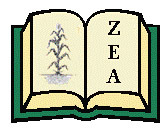Files
Download Full Text (13.6 MB)
Description
The seven species of swans of the world are an easily and universally recognized group of waterfowl, which have historically played important roles in the folklore, myths and legends in many of the world’s cultures. Among the largest of all flying birds, they have also almost universally been used as symbols of royalty, grace and beauty, and largely for these reasons swans have only rarely been considered acceptable as targets for sport hunting. Swans occur on all the continents except Africa, although most species are associated with the temperate and arctic zones of North America and Eurasia. Among birds, swans are relatively long-lived species, and are also among the most strongly monogamous, having prolonged pair and family bonds that strongly influence their flocking and social behavior, and contribute to the overall high degree of human interest in them. This volume of 48,000 words describes their distributions, ecology, social behavior, and breeding biology. Included are nine distribution maps, 19 drawings, and 23 photographs by the author. There is a bibliography of nearly 700 references.
ISBN
ISBN 978-1-60962-082-0 e-book
Publication Date
2-25-2016
Publisher
Zea Books
City
Lincoln, Nebraska
Keywords
ornithology, swans, waterfowl, trumpeter, cygnus, cob, pen, cygnet
Disciplines
Animal Sciences | Natural Resources and Conservation | Ornithology | Other Life Sciences | Population Biology | Poultry or Avian Science | Terrestrial and Aquatic Ecology
Recommended Citation
Johnsgard, Paul A., "Swans: Their Biology and Natural History" (2016). Zea E-Books Collection. 38.
https://digitalcommons.unl.edu/zeabook/38

Included in
Natural Resources and Conservation Commons, Ornithology Commons, Other Life Sciences Commons, Population Biology Commons, Poultry or Avian Science Commons, Terrestrial and Aquatic Ecology Commons



Comments
Copyright (c) 2016 Paul A. Johnsgard.